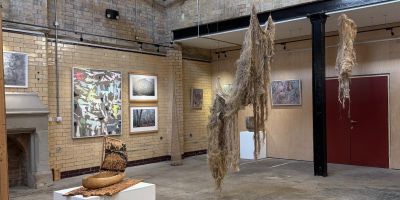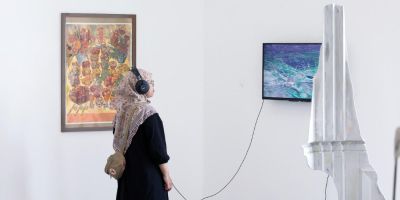My PhD experience: retrospective and prospective

Postgraduate researcher Stuart Bowes looks back over the three years of his PhD with the Royal Armouries and the University of Leeds.
After three years, 83,000 words and one global pandemic, I have just submitted my PhD thesis for examination. Looking back, it has been quite a journey.
When I began in October 2020, the world was upside-down and we were all stuck inside. With the Royal Armouries shut for much of my first year and beyond, the structure of the entire project had to be fundamentally overhauled in response. All the same, it was greatly sustaining to have a clear purpose during that extended period of uncertainty.
Despite these early obstacles, I have still somehow managed to meet every critical deadline and milestone over the three years of my PhD. I was even able to finish my thesis within the projected funding timelines.
Now that I have effectively reached the end of the doctoral process, it seems appropriate to revisit the first of this series of blog posts from January 2021. In retrospect, it certainly provides a resonant point of comparison.
In this blog entry, I explored the challenges of starting a PhD under pandemic conditions without physical access to libraries, archives or museums. As we enter 2024, it is more than a little disquieting to reflect on how distant these major upheavals now feel.
Nevertheless, certain aspects of this post seem much more familiar. For example, my later experiences have only confirmed my initial assessment of a PhD’s fundamental nature: “a versatile research project whose guiding questions and objectives constantly evolve in response to prevailing conditions.”
There is even a certain level of coherence in more mundane matters, as borne out by the comparison of the available images.

PhD reading materials, 2020 and 2023. Photo by Stuart Bowes.
The range of core books has altered somewhat over the three years, but there are some interesting continuities. I have had a couple of these titles continuously out on loan from the library throughout the project (reflecting its focus on the messy intersection of museum practice and weapons law). Thank goodness for automatic online renewal!
A very similar observation can be made about my general surroundings. My office setup has changed a fair amount as I have settled into the project, but it is still the same fantastic view (if slightly more obscured by screens now).

Office space at the Royal Armouries in 2020 and 2023. Photo by Stuart Bowes.
These modest elements of my research experience seem to epitomise the overall course of the project: continuity and change in comparable measures.
Another prominent theme within my first blog post (and throughout the PhD as a whole) was collaboration. In conjunction with my main research project, I have been fortunate enough to pursue various occupational experiences at numerous cultural institutions.
Not only have I been able to directly engage with registrar practice at the Royal Armouries as part of my Collaborative Doctoral Award, but I have also worked as a project researcher, transcriber, interviewer, seminar instructor and examiner at various stages.
Through these different roles, I have cultivated a network of supportive contacts across the academic and museum sectors. While I did foresee a strong working relationship with the Royal Armouries as my primary research partner, I did not fully anticipate the array of connections I would make at the University of Leeds or Leeds Museums and Galleries.
Thank you to everyone who has helped me along the way.

Leeds Registrars in Strasbourg for the European Registrars Conference 2022, November 2022. Photo by Chris Bradley.
Last but not least, my opening contribution to this blog communicated the everyday realities of research work – the core processes of “reading, thinking and writing”. I have certainly done a lot of all three throughout this doctoral project.
Indeed, I may have been slightly optimistic in believing the hard work was over after completing the full draft of the thesis this summer. The successive rounds of reviewing, editing and checking have required me to invest considerable effort over the last few months.
As you can imagine, I was most relieved when I was finally able to hand over this monumental work. It is out of my hands for the time being.
With the submission of the thesis, the main body of the project is now over but it does not mean that the research ends here. As seems to be the case with all academic investigations, this work has provided just as many questions as answers.
There is much still to discover about the tangled relationships between registrar practice, collections management and professional thinking, never mind their complex historical roots. I certainly have some ideas for how to take aspects of this research forward, so it’ll be interesting to see how these new avenues of inquiry continue to develop into the future.

Presenting research findings at the European Registrars Conference 2022. Image © Styl'List Images - Charlotte Cavaleiro, 5 November 2022.
In any case, the project itself is not quite over yet. There is the small matter of my viva, which is scheduled for the end of January. I will be thoroughly reviewing my thesis from top to bottom over the next few weeks, preparing to satisfy the enquiries of my examiners.
All that is left for me to do now is to marshal my arguments and rehearse my defence.
More information
Find out about Stuart Bowes’ research.
Follow Stuart’s journey as a Postgraduate Researcher on the Registrars: Training for the Future blog.
Feature image
Leeds Dock from the interior of Royal Armouries, June 2018. Photo by Andy Lord.




